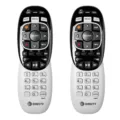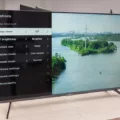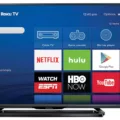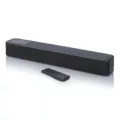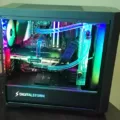DirecTV is a popular satellite television service that offers a wide range of channels and programming options. However, there may be instances where you experience no sound while using your DirecTV receiver. In this article, we will explore some common reasons for this issue and provide step-by-step troubleshooting tips to help you resolve it.
1. Check the Power and Connections:
The first step in troubleshooting no sound on DirecTV is to ensure that all power and connection cables are securely plugged in. Start by unplugging the power cable from the receiver and leave it unplugged for about 20 seconds. Then, reconnect the power cable and check if the sound has been restored.
2. Verify Audio Settings:
DirecTV offers different audio output options, such as PCM stereo, Dolby Digital 2.1 stereo, or DD5.1 surround audio. Check if the audio setting on your DirecTV receiver is correctly configured. You can access the audio settings by pressing the MENU button on your remote control, selecting Settings, and then navigating to the Audio section. Ensure that the appropriate audio output option is selected.
3. Check Volume and Mute:
It may seem obvious, but sometimes the volume might be turned down or the mute function might be enabled. Use your remote control to increase the volume level and ensure that the mute button is not engaged. Additionally, check if the volume on your television or external sound system is set at an appropriate level.
4. Test Different Channels and Programs:
If you experience no sound on a specific channel or program, try switching to another channel or program to determine if the issue is isolated. It is possible that the audio problem is related to the specific broadcast or content being played.
5. Reset the Receiver:
If the above steps do not resolve the issue, you can try resetting your DirecTV receiver. Locate the small red reset button on the receiver, usually found on the front or back panel. Press and hold the reset button for a few seconds until the receiver restarts. This will reset the system and may help restore the sound.
6. Contact DirecTV Support:
If none of the troubleshooting steps mentioned above work, it is recommended to contact DirecTV customer support for further assistance. They have trained technicians who can guide you through additional troubleshooting steps or arrange for a technician to visit your location if necessary.
Experiencing no sound on your DirecTV can be frustrating, but it is often a solvable issue. By following the troubleshooting steps outlined in this article, you can identify and resolve the problem in most cases. Remember to check the power and connections, verify audio settings, test different channels, reset the receiver, and seek support if needed.

How Do You Fix Your TV Without Sound But Pictures?
To fix your TV when there is no sound but pictures, follow these steps:
1. Check the volume: Ensure that the volume on your TV is not muted or set to zero. Use the remote control or the buttons on the TV to increase the volume level.
2. Examine the connections: Verify that all the audio cables are properly connected to the TV and any external devices such as cable/satellite box, DVD player, or game console. Make sure the cables are securely plugged in and not damaged.
3. Test different inputs: Switch to different input sources on your TV, such as HDMI, component, or AV, to see if the issue is specific to a particular input. This can help identify whether the problem lies with the TV or the connected device.
4. Restart the TV and external devices: Turn off your TV and any connected devices. Unplug the power cables from both the TV and the devices, wait for about 20 seconds, and then plug them back in. Turn on the TV and the devices one by one.
5. Reset audio settings: On your TV’s menu or settings, look for an audio or sound section. Check if there are any unusual settings or options that could be affecting the sound output. Consider resetting the audio settings to their default values.
6. Update firmware: If your TV has a built-in software update feature, check for any available updates. Updating the firmware can address known issues and improve overall performance, including sound-related problems.
7. Perform a factory reset: As a last resort, you can try performing a factory reset on your TV. Keep in mind that this will erase all your customized settings, so make sure to note them down before proceeding. The steps to perform a factory reset may vary depending on your TV model, so refer to the user manual or manufacturer’s website for specific instructions.
If none of these steps resolve the issue, it may indicate a hardware problem with your TV’s audio components. In such cases, it is recommended to contact the manufacturer’s customer support or seek professional assistance for further troubleshooting or repair.
What is the Audio Output of Directv?
The audio output of DirecTV can vary depending on the station or network being broadcasted and the audio settings on the DirecTV Stream box. Here are the possible audio output options:
1. PCM Stereo: This is a standard audio format that provides two-channel stereo sound. It offers clear audio quality with separate left and right audio channels.
2. Dolby Digital 2.1 Stereo: This audio format utilizes Dolby Digital technology to deliver a 2.1 channel stereo sound experience. It consists of two main audio channels for left and right stereo sound, along with a dedicated subwoofer channel for low-frequency effects.
3. DD5.1 Surround Audio: This format provides a more immersive audio experience with 5.1-channel surround sound. It uses Dolby Digital technology to deliver audio through six different channels – front left, front center, front right, rear left, rear right, and a dedicated subwoofer channel. This allows for a more realistic and spatial audio experience, particularly when watching movies or content specifically mixed for surround sound.
Please note that the specific audio output available may depend on the content being watched and the capabilities of the audio system connected to the DirecTV Stream box.
How Do You Reboot Your Directv Box?
To reboot your DIRECTV receiver, you have a couple of options:
1. Using the Reset Button:
– Locate the reset button on your DIRECTV receiver. It is usually a small, red button.
– Press and hold the reset button for about 10 seconds until the receiver restarts.
– Wait for the receiver to complete the reboot process, which may take a few minutes.
– Once the reboot is complete, your DIRECTV box should be back up and running.
2. Using the Power Button:
– Locate the power button on your DIRECTV receiver. It is usually located on the front panel or top of the device.
– Press and hold the power button for about 10 seconds until the receiver turns off.
– Unplug the power cord from the back of the receiver.
– Wait for about 15 seconds and then plug the power cord back in.
– Press the power button again to turn the receiver back on.
– Wait for the receiver to complete the reboot process, which may take a few minutes.
– Once the reboot is complete, your DIRECTV box should be operational again.
It is important to note that rebooting your DIRECTV receiver will not delete any recordings or settings. It simply restarts the system, which can help resolve various issues such as frozen screens, slow performance, or connectivity problems.
If you continue to experience issues with your DIRECTV box after rebooting, you may need to contact DIRECTV customer support for further assistance.
How Do You Get Your Directv Remote to Control the Volume on Your Samsung TV?
To program your DirecTV remote to control the volume on your Samsung TV, follow these steps:
1. Press the MENU button on your remote control.
2. Use the arrow buttons to navigate to the Settings option and press OK.
3. Select Remote Control from the Settings menu and press OK.
4. Choose Program Remote and press OK.
5. On the Program Remote screen, select the device you want to program (in this case, your TV) and press OK.
6. If your TV brand is listed, select it from the options provided. If your Samsung TV is not listed, proceed to step 7.
7. Use the code lookup tool on the screen to find the 5-digit code for your Samsung TV. Follow the instructions on the screen to enter the code and test if the volume control works. If the first code doesn’t work, try the next one until you find the correct code.
8. Once you have successfully programmed the remote, a confirmation message will appear on the screen. Press OK to finish the programming process.
Now, your DirecTV remote should be able to control the volume on your Samsung TV. If you experience any issues or need further assistance, refer to the user manual provided with your remote or contact DirecTV customer support.
Conclusion
If you are experiencing no sound on your DirecTV Stream box, there are a few troubleshooting steps you can try. The first step is to unplug the power cable from the box and wait for 20 seconds before plugging it back in. This simple reset can often resolve any temporary issues or glitches in the system.
Once the box is powered back on, you will need to check the audio settings. The optical output can be set to PCM stereo, Dolby Digital 2.1 stereo, or DD5.1 surround audio. The audio setting depends on what the station or network is broadcasting, as well as the default setting on your DirecTV Stream box.
To adjust the audio settings, you can use your remote control. Press the MENU button and navigate to the Settings menu. From there, select Remote Control and then Program Remote. Choose the device (TV, audio, DVD) that you want to program. If you don’t see your specific device listed, you can use the code lookup tool to find the 5-digit code.
Follow the on-screen prompts to complete the programming process and ensure that the audio settings are correctly configured for your device. This step can help ensure that the sound is properly transmitted to your TV or audio system.
By following these troubleshooting steps, you should be able to resolve any sound-related issues with your DirecTV Stream box. However, if the problem persists, it may be necessary to contact DirecTV customer support for further assistance. They will be able to provide specific troubleshooting steps based on your individual setup and equipment.






